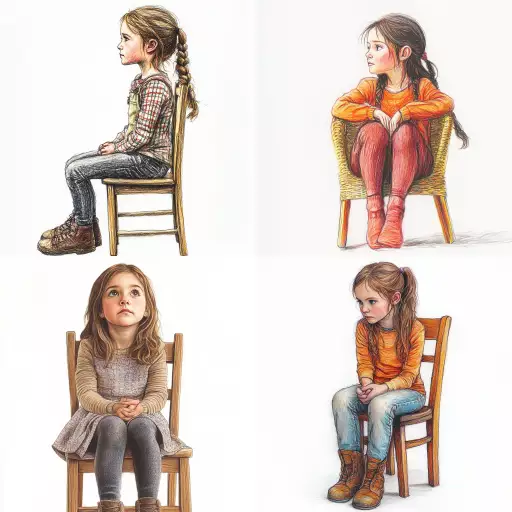Explore the Best AI Image Gallery

Beyond the Canvas: AI-Generated Visual Content and the Future of Creativity
The realm of creativity is undergoing a profound transformation, fueled by the emergence of artificial intelligence (AI) and its capacity to generate visually compelling content. From realistic images to captivating animations, AI-powered tools are empowering artists, designers, and businesses to push the boundaries of imagination and innovation. This blog post delves into the multifaceted impact of AI-generated visual content on the creative industry, exploring its diverse applications, ethical considerations, and exciting future trajectories.
A New Era of Creative Expression
AI-powered tools are revolutionizing the way we create and consume visual content. Generative adversarial networks (GANs), a type of deep learning algorithm, have emerged as particularly powerful in generating realistic images, artwork, and even 3D models. These algorithms learn from vast datasets of existing imagery, enabling them to produce novel and often surprising results.
For artists, AI-generated content presents a unique opportunity to explore new creative avenues and push the boundaries of their artistic expression. It can serve as a powerful tool for experimentation, allowing artists to rapidly iterate on ideas and explore unconventional concepts. AI can also assist in tasks such as creating texture maps, generating background elements, or even conceptualizing entire scenes, freeing up artists to focus on higher-level creative decisions.
Applications Across Industries
The impact of AI-generated visual content extends far beyond the realm of fine art. It is transforming various industries, including:
- Advertising and Marketing: AI can generate personalized visuals for targeted campaigns, creating engaging and relevant content that resonates with specific audiences.
- Gaming and Entertainment: AI-powered tools can create realistic characters, environments, and special effects, enhancing the immersive experience of video games and other interactive media.
- Design and Architecture: Architects and designers can leverage AI to generate conceptual designs, explore different iterations, and visualize complex structures in a more efficient manner.
- Education and Training: AI-generated visuals can be used to create engaging and interactive learning experiences, bringing concepts to life and enhancing understanding.
Ethical Considerations
The rise of AI-generated visual content also raises important ethical considerations:
- Copyright and Ownership: Questions arise regarding the ownership and intellectual property rights of AI-generated content. Who owns the copyright to a piece created by an algorithm?
- Bias and Fairness: AI algorithms are trained on existing datasets, which can contain biases that may be reflected in the generated content. It is crucial to address these biases to ensure fairness and inclusivity.
- Misinformation and Deepfakes: The ability to create realistic synthetic media raises concerns about the potential for misuse, such as generating fake news or creating convincing deepfakes.
Future Trends
The field of AI-generated visual content is rapidly evolving. Future trends include:
- Increased Realism and Detail: AI algorithms will continue to improve, generating even more realistic and detailed visuals.
- Personalization and Customization: AI will enable the creation of highly personalized visual content tailored to individual preferences.
- Integration with Other Technologies: AI-generated visuals will be seamlessly integrated with other technologies, such as augmented reality (AR) and virtual reality (VR), creating immersive experiences.
The convergence of AI and creativity is ushering in a new era of artistic expression and innovation. By embracing the possibilities while addressing the ethical challenges, we can harness the transformative power of AI-generated visual content to shape a more creative and dynamic future.



](https://images.ai-img.art/thumbnails/150/157712d76865d557120f9baf988de3d0525225295a2789c89bf2c4a5a96a03d1.webp)




](https://images.ai-img.art/thumbnails/150/51c93500396faff4e7fa8b42bc68033067b16b2230e3496e95c482a581ff0fe9.webp)
![**Representation: A dog acting as a private tutor to a child. The dog holds a ruler in its paw and stands at the blackboard to explain a dog diagram to the child. Graphic style: Line drawing, cartoon style, influenced by Franco-Belgian comics, thick black lines, simplified design, vector, black and white only, in the style of Keith Haring or the French comic strip "Alinéa". [IMPORTANT]: A single continuous line extending from one side of the image to the other, minimalist, strong outlines, line drawing, without lifting the hand, ultra-simplified, no shading, entirely white image, drawing created in the center of a sheet of paper. --ar 16:5** - <@627984126871470085> (fast)](https://images.ai-img.art/thumbnails/150/7a854648a81e51241dcca8d24dd6e3bfcf07ad1df51baf401c9b729f4cf411fa.webp)











](https://images.ai-img.art/thumbnails/150/9d51c5e673b4f2068b7b01abc35425a06f173b76303adf9ad29ca14302c25b18.webp)

![**Representation: A dog acting as a private tutor to a child. The dog holds a ruler in its paw and stands at the blackboard to explain a dog diagram to the child. Graphic style: Line drawing, cartoon style, influenced by Franco-Belgian comics, thick black lines, simplified design, vector, black and white only, in the style of Keith Haring or the French comic strip "Alinéa". [IMPORTANT]: A single continuous line extending from one side of the image to the other, minimalist, strong outlines, line drawing, without lifting the hand, ultra-simplified, no shading, entirely white image, drawing created in the center of a sheet of paper. --ar 16:5** - Variations (Strong) by <@627984126871470085> (fast)](https://images.ai-img.art/thumbnails/150/f4e034998ccd869d8a061fd12017514fcd92210eb33d4222dc9b54716223f4dd.webp)











![**Representation: A teenager smiling while thinking about a friendly dog, a comic-style thought bubble with a friendly dog inside. Graphic style: Line drawing, cartoon style, influenced by Franco-Belgian comics, thick black lines, simplified design, vector, black and white only, in the style of Keith Haring or the French comic strip "Alinéa". [IMPORTANT]: A single continuous line extending from one side of the image to the other, minimalist, strong outlines, line drawing, without lifting the hand, ultra-simplified, no shading, entirely white image, drawing created in the center of a sheet of paper. --ar 16:5** - <@627984126871470085> (fast)](https://images.ai-img.art/thumbnails/150/6fc850f638e3dee0c4b121acecad2c8419e02bdeac7f871d625f1003c1c3abe1.webp)








